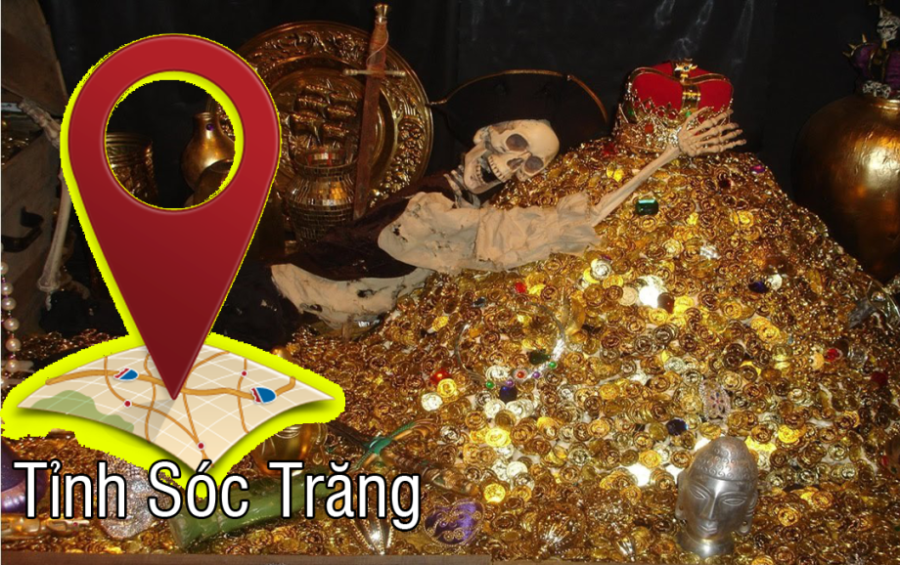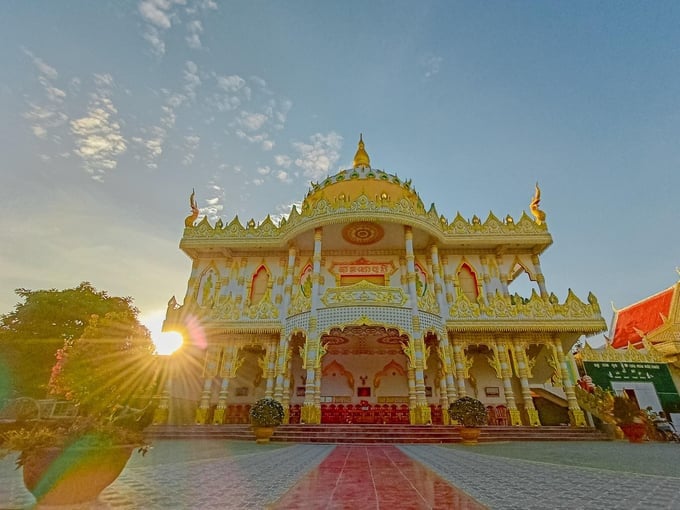Spanning over 3,311 km², with a population of over 1.2 million people and a 72-km coastline, Soc Trang captivates with its unique blend of Khmer, Kinh, and Chinese cultures.
The three major estuaries of Dinh An, Tran De, and My Thanh emptying into the sea bestow a natural bounty upon this land. Yet, few know that the very name “Soc Trang” holds an intriguing historical secret.

Soc Trang: A Province Named After the King’s Treasury
The name Soc Trang originates from the Khmer phrase, “Srok Kh’leang,” which translates to “the land of the king’s silver repository.” “Srok” means “land” or “country,” while “Kh’leang” signifies a “repository,” “storehouse,” or a place for silver. Through the process of transliteration from Khmer to Vietnamese, “Srok Kh’leang” evolved into “Sốc-Kha-Lang,” eventually simplifying to the familiar Soc Trang of today.
During the reign of King Minh Mang, the province was briefly renamed Nguyet Giang, but the name Soc Trang persisted and became an integral part of the region’s cultural identity. The tale of the royal treasury embedded in its name has sparked curiosity and inspired exploration among visitors from near and far.
Beyond its historically rich name, Soc Trang is renowned as the “Land of Golden Pagodas.” Hundreds of golden temples, built by the Khmer, Kinh, and Chinese communities, form a vibrant tapestry of multicultural and diverse heritage. These Buddhist architectural marvels serve not only as sacred places of worship but also as tourist attractions renowned for their unique designs and intricate sculpting artistry.
Among the multitude of temples, several stand out as must-visits. Som Rong Pagoda, located in Soc Trang City, impresses with its majestic spires, seamlessly blending traditional and modern Khmer architecture. Completed in 2017, this temple quickly became a spiritual and tourist destination, attracting locals and travelers alike.
Peam Buol Thmay Pagoda, whose name means “new crossroads” in Khmer, offers a distinct architectural experience with its Thai-inspired design, exuding elegance and sophistication that sets it apart from other pagodas in the province.

The predominant white color, accented with delicate gold patterns, creates a sacred and impressive ambiance.
Lastly, there’s Sa Lon Pagoda, also known as Chen Kieu Pagoda, situated in Dai Tam Commune, My Xuyen District. What sets this temple apart is its unique decoration using porcelain and ceramic plates and dishes.
The colorful ceramic fragments create a captivating and distinctive beauty, a stark contrast to the usual golden splendor of other pagodas, further enriching Soc Trang’s diverse cultural landscape. With its valiant history, enigmatic name, and rich cultural heritage, Soc Trang Province rightfully earns its place as a captivating destination for those eager to explore and delve into the depths of Vietnamese culture.
The Ultimate Guide to Cu Lao Dung (Soc Trang): A Tropical Paradise Unveiled
Cù Lao Dung is a renowned tourist destination in Soc Trang province, boasting a plethora of attractions that beckon visitors to explore its charms. Uncover the allure of Cù Lao Dung by delving into two of its most enticing and renowned tourist spots, each offering a unique glimpse into the beauty and culture of this captivating locale.
Exploring My Xuyen (Soc Trang): 5 Must-Visit Attractions
“My Xuyen is a renowned tourist destination in Soc Trang province, boasting a plethora of attractions that beckon travelers far and wide. Get ready to uncover the top 5 captivating spots that this enchanting locale has to offer, as we embark on a journey through the very best of My Xuyen’s beauty and allure.”






































